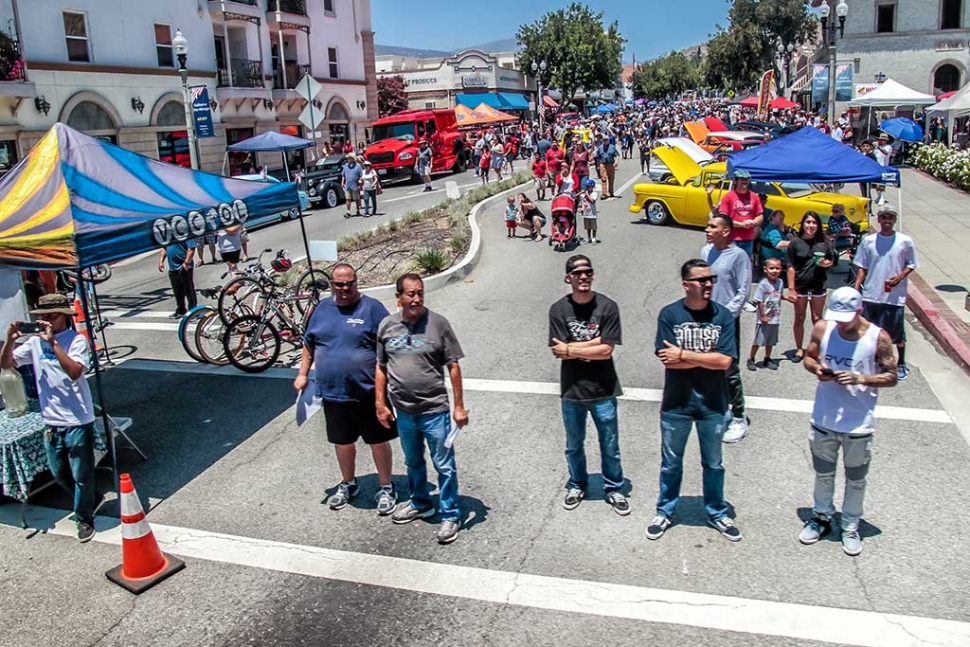|
Photography Know-How
 Photo of the Week "Happy Car Show lookie loos" by Bob Crum. Photo data: ISO 100, 16-300mm lens @16mm, Aperture f/9.0 & 1/250 seconds. By Bob Crum — Wednesday, July 5th, 2017
Go circular!
By now, I presume that everybody knows that there was a “Car Show” in town on the 4th. Subsequently, I photoed it in the hot brutal sun. In hind sight, I should have stayed home and celebrated the 4th with a 5th of Jack Daniels, of course. But I digress... The sun was extraordinarily bright indeed. Uncomfortably warm temperature. Worse, bright sun makes the paint of a beautifully restored classic car look as faded as an over-boiled lobster. Blah! What to do? Well, I simply retrieved my trusty circular polarizer (CP) filter. Every photographer should have one in their landscape kit. If I lost mine, I'd have to take up knitting. A polarizer filter is an invaluable tool for certain conditions. Like the car show. It serves two useful functions. First, it cuts glare and reflections, allowing the vibrant colors to render with greater saturation as opposed to looking 'washed out'. In other situations, for example, those puffy cumulus clouds stand out delightfully against a deep blue sky produced with a CP filter. It's called a circular polarizer because after mounting on the lens, it can be rotated. Hence, the amount of polarizing by the CP filter is adjustable. This makes it possible to apply just the right amount of effect. Sometimes, at certain times of the day, I notice the polarizer can make the blue sky too dark. Simply rotate the filter to lessen the effect. Very handy. Important! The circular polarizer is most effective when shooting at a 90° angle from the direction of the sun. If you're shooting in the direction of the sun or 180° from the sun, i.e., in line with the sun, the CP filter will have no effect. When you get back home, you'll have paint the sky with blue sky computer paint (I'm beginning to bottle it so it'll be for sale soon). One other minor issue. Because the sky is darkened the most when shooting at a 90° angle from the sun, deviating somewhat will most likely end up with an uneven sky. The sky will be darkened the most at the 90° angle from the direction of the sun and less dark at a lesser angle of the sun. Generally, that doesn't bother me, but it might you. Tip: The blue sky unevenness can be adjusted in post processing. One other thing I also learned when I photoed Mermaids up at Big Sur. A CP will on average reduce the light to your lens by one stop. So in low light conditions, remember to apply exposure compensation to adjust accordingly. I got slapped with a mermaid tail because I underexposed her. Lastly, all circular polarizer filters are not equal. Don't buy a cheapy. Cheap CP filters will distort your colors not to mention the overall image quality. Buy a quality CP filter and it will last 75 years. To verify this, I'm having my CP filters placed in my burial pine box so I can check the claim. Stay tuned to this space. My CP filter of choice is the B+W (Schneider) Kasemann HTC filters. They are the best. Most importantly, they make my mermaids look gorgeous. Speaking of gorgeous, check the vibrant reds, the rich blues, the luscious greens and the deep black in the photos of the cars I shot with a B+W Kasemann CP filter. Very cool under a hot sun. BTW, did you notice how high I jumped to get the Photo of the Week shot? Happy photoing, Email me your question, comments and/or suggestions to: bob@fillmoregazette.com |
